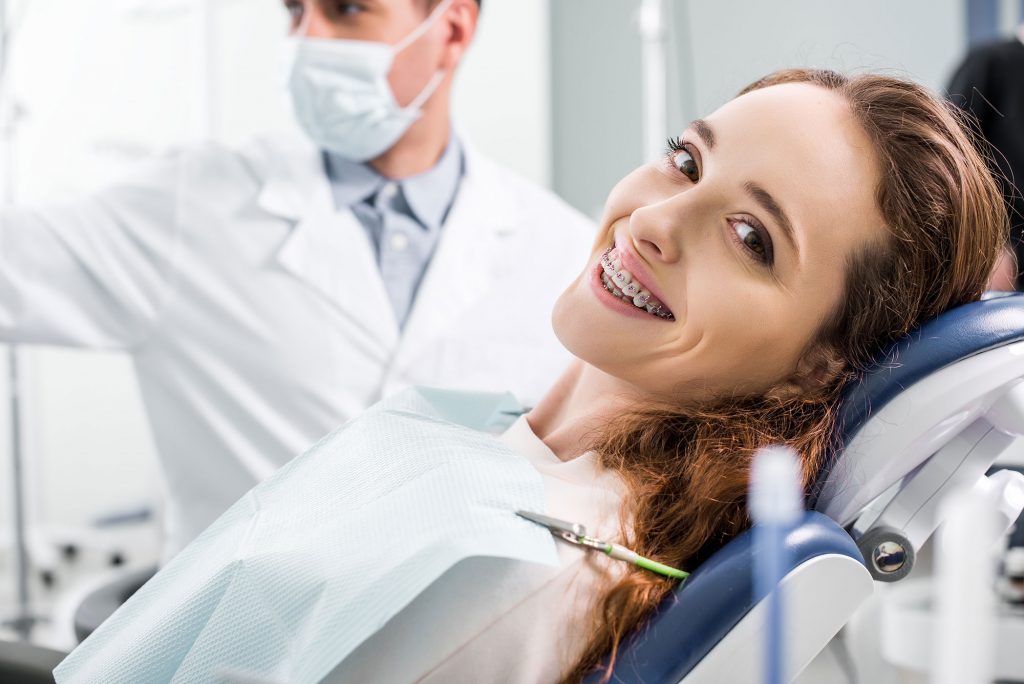Orthodontics may seem boring at first: after all, how exciting can it be looking at teeth all day? However, once you peel back the hood, orthodontics, like any science, has a lot of useful and interesting information to glean. As a nod to just how interesting teeth can be, here are 11 obscure yet interesting facts about teeth and orthodontic care.
1. The first braces were made in ancient Egypt
The first evidence we have of braces are found on mummies in ancient Egypt (5,000-3,000 BCE). The first braces were made from corded animal skin attached to teeth, similar to wires modern orthodontists use. Orthodontic procedures date back as early as 1000 BCE in ancient Etrusca.
2. Not all dentists are orthodontists, but all orthodontists are dentists
The terms “dentist” and “orthodontist” are sometimes used interchangeably, but this is inaccurate. Dentists are specialists in the care and prevention of tooth and mouth disease, while orthodontists are dentists who are specialized in the correction of irregularly aligned teeth. In other words, all orthodontists are dentists, but not all dentists are orthodontists, sort of like squares and rectangles. Only about 5% of dentists are certified orthodontists.
3. The word “orthodontist” comes from Ancient Greek
Like many words in the medical sphere, the term “orthodontist” has Greek roots. It comes from the two words ‘ortho’, meaning “straight” or “correct” (like in orthogonal) and ‘dont’ meaning “tooth.” So “orthodontics” literally means “the practice of straight teeth.”
4. Orthodontics became a medical specialty in the 1900s
Although people have been correcting irregular teeth for millennia, the American dentist Edward H. Angle (1855-1930) is widely considered the father of modern orthodontics. Angle dedicated his life to standardizing and teaching the techniques of orthodontics. He classified several orthodontic conditions and pioneered many standard surgical techniques. He also invented the first expanders, modern braces, and brackets.
5. The first modern braces were made from gold
The first braces were actually made from gold and gold alloys. Gold is very malleable so it is easy to shape into dental appliances and it stretches in tandem with the teeth while retaining overall shape. The top orthodontist of an area may embellish their work with decorative flourishes to complement the gold. However, the malleable nature of gold meant that patients had to see their orthodontist much more regularly for adjustments.
6. Modern braces use a metal designed by NASA
Modern braces are commonly made from nickel-titanium, a material that is used by NASA for its mechanical properties. Nickel-titanium is interesting because it is both superelastic, meaning it can change shape and compress very easily, and it exhibits shape-memory, meaning it can return to its regular undeformed shape above a certain activation temperature. These two properties make it very useful for orthodontic devices. As the nickel-titanium wire rises to the ambient temperature of the mouth, it contracts back to its original shape, aligning the teeth in the process.
7. Straight teeth are good for your health
Straight teeth are about more than just appearances. Crooked teeth put pressure on parts of the mouth that can evolve into serious and painful medical complications down the road. Straight teeth are also easier to keep clean, and dirty crooked teeth have been linked to an increased risk of cardiovascular and digestive issues.
8. Braces are not the only option
In the past, the only real option for orthodontic care to fix unaligned teeth were traditional metal braces. While these certainly get the job done, they are not the only option. Invisalign is a new recent orthodontic technology that uses a series of removable clear spacers and brackets to align your teeth. Invisalign is as effective as traditional braces at fixing crooked teeth and best of all, is virtually see-through and discreet.
9. It takes around 10 years to become an orthodontist
Becoming an orthodontist take many years of intensive study. You must first graduate from a 4-year undergrad institution, then attend 4 years of dental school. You must then spend an extra 2 years getting an orthodontics specialty. That’s just to become a certified orthodontist. Orthodontists are required to keep learning to keep up with trends and developments in the field. So, in a sense, orthodontists never really finish school; they continue to learn throughout their entire career.
10. Braces brackets are secured to teeth via a process called acid etching
Braces brackets achieve their impressive adhesive strength due to a process called acid etching. When braces brackets are applied, an acidic substance is used to dissolve the smear layer of the tooth and open up the tiny tubules in the enamel. The adhesive material flows into these tubules, filling them up. The adhesive is then cured with a special blue light that causes it to harden and expand, creating a strong lock-and-key bond between the bracket and the tooth.
These brackets have to be removed with a specialized cutting tool, and then the enamel is smoothed by fine burs.
11. Young children are not the only ones who can benefit from orthodontic work
Braces and other orthodontic appliances are often seen as something specifically designed by growing children. While it is true that kids require specific orthodontic techniques, anyone young and old can get orthodontic work. In fact, approximately 25% of orthodontic patients nationwide are adults and many adults currently have braces or other corrective devices. Invisalign is an extremely popular option for tooth alignment correction among adults as it is discreet, easy to manage, and as effective as traditional bracket and wire braces. Many older people also experience unique teeth problems that can be managed by regularly visiting an orthodontist.
Conclusions
Hopefully, we have convinced you that not all facts about teeth and orthodontics are boring. Orthodontics has plenty of other interesting things to tell us, just ask your orthodontist!
If you or someone you know are looking for child or adult orthodontic care or Philadelp[hia Invisalign, consider scheduling an appointment with Orthodontics Limited.



